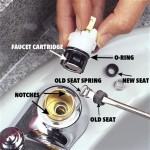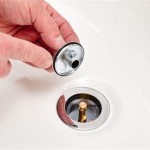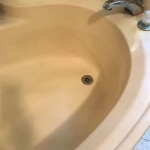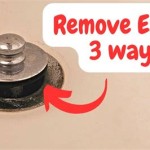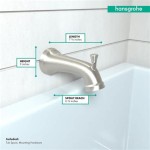How to Drain a Portable Bathtub
Portable bathtubs offer a convenient solution for individuals seeking bathing options where permanent fixtures are unavailable or impractical. These tubs are often used for infants and young children, individuals with limited mobility, or in settings such as camping and travel. Draining a portable bathtub efficiently and safely is a critical aspect of its use, and understanding the different methods and potential challenges is important for optimal functionality and hygiene.
The process of draining a portable bathtub is not always straightforward, as the design and features vary significantly between models. Considerations include the bathtub's size, material, presence of a drain plug or valve, and the proximity to a suitable drainage point. Careful attention to these elements ensures the water is disposed of effectively without causing spills, damage, or unnecessary effort.
Understanding the Drainage System
Before attempting to drain a portable bathtub, it is essential to identify the existing drainage system. Many portable tubs incorporate a simple drain plug located at the bottom of the tub. This plug, typically made of rubber or plastic, creates a watertight seal when in place. Removing the plug allows water to escape through a designated drain hole.
Other portable bathtubs feature a built-in drain valve. This valve, often operated by a lever or knob, controls the flow of water. When the valve is open, water drains freely; when closed, it prevents water from escaping. The presence of a drain valve adds a layer of control during the draining process, allowing for gradual emptying of the tub.
Some advanced models may include a drainage hose that can be connected to a sink, toilet, or outdoor drainage area. This hose facilitates directed water disposal, minimizing the risk of spills and splashes. Understanding the specific type of drainage system employed by the portable bathtub is crucial for executing the draining procedure correctly.
It's also essential to check for any obstructions or debris that might hinder the drainage process. Hair, soap residue, or small objects can accumulate near the drain opening, impeding water flow. Regular cleaning and maintenance of the drainage system can prevent such issues and ensure smooth draining each time the bathtub is used.
The location of the drainage system also dictates the method used to drain the tub. If the drain plug or valve is positioned at the bottom of the tub, it is often necessary to lift or tilt the tub slightly to ensure complete emptying. However, if a drainage hose is present, one can direct the water flow without physically manipulating the tub.
Steps for Draining a Portable Bathtub
The general steps for draining a portable bathtub will vary based on its features, but the following guidelines provide a comprehensive overview:
- Preparation: Before draining, ensure that the area surrounding the bathtub is clear of obstructions. Place towels or absorbent mats around the tub to catch any spills or splashes. Identify the nearest drainage point, such as a sink, toilet, or outdoor drain, and ensure it is accessible.
- Plug/Valve Engagement: If the bathtub has a drain plug, locate it and verify it's securely in place before filling the tub. If it has a drain valve, make sure it is in the closed position.
- Draining Process (Plug): If using a model with a drain plug, carefully remove the plug. Be prepared for the sudden release of water. If the bathtub is elevated or positioned near a drain, the water will flow directly into the drain. If not, manually direct the water stream.
- Draining Process (Valve): If using a model with a drain valve, slowly open the valve to initiate the drainage process. Control the flow of water to prevent splashing or overflow. If the valve is connected to a drainage hose, ensure the hose is properly positioned in the drainage point.
- Tilting and Emptying: As the water level decreases, gently tilt the bathtub towards the drain to facilitate complete emptying. This step is crucial for removing residual water and preventing stagnation. Use care when tilting the tub, especially when it is relatively heavy.
- Cleaning: After draining, rinse the bathtub with clean water to remove any remaining soap, dirt, or debris. Wipe down the interior and exterior surfaces with a clean cloth to prevent the buildup of mildew or bacteria.
- Storage: Once completely dry, fold or collapse the portable bathtub according to the manufacturer's instructions. Store it in a clean, dry place to prevent damage or deterioration.
Troubleshooting Drainage Issues
Despite following the proper procedures, certain issues can arise during the draining process of a portable bathtub. Identifying and addressing these problems is essential for maintaining the bathtub's functionality and preventing water damage.
Clogged Drain: One common issue is a clogged drain. This can occur due to the accumulation of hair, soap scum, or other debris. If the water is draining slowly or not at all, inspect the drain opening for any visible obstructions. Use tweezers or a small hook to remove any debris. For more stubborn clogs, consider using a drain cleaner specifically designed for bathtubs.
Leaking Plug or Valve: Another potential problem is a leaking drain plug or valve. This can result in a continuous trickle of water after the bathtub has been filled. Inspect the plug or valve for any signs of damage or wear. If the plug is cracked or deformed, it may need to be replaced. If the valve is leaking, try tightening the connections or lubricating the moving parts.
Incorrect Positioning: Improper positioning of the bathtub can also impede drainage. If the bathtub is not level, water can collect in certain areas, making it difficult to drain completely. Ensure that the bathtub is placed on a flat, even surface to facilitate smooth drainage. Adjust the positioning as needed during the draining process.
Kinked or Blocked Hose: When using a model with a drainage hose, always inspect the hose for kinks, bends, or obstructions. A kinked hose can restrict water flow, while an obstructed hose can prevent drainage altogether. Straighten out any kinks and remove any debris from the hose to ensure unimpeded water flow.
Incorrect Valve Operation: Lastly, ensure the valve is being operated correctly. Some valve types require precise alignment or specific movements to fully open and close. Refer to the manufacturer’s instructions for proper valve operation to avoid any confusion or mishaps during the draining process.
Using portable bathtubs requires attention to detail to ensure proper drainage and maintenance. By understanding the drainage system, following the correct steps, and troubleshooting potential issues, users can optimize the functionality and longevity of their portable bathtubs, promoting hygiene and convenience.

Homefilos Collapsible Portable Bathtub Japanese Soaking Tub For Shower Inflatable Size Foldable Ofuro Com

Ez Bathe Inflatable Bath Tubs Portable Bathtub For S

Wireless Inflation Baby Bathtub Buy Staranddaisy

Simple Project 56 In X 24 Collapsible Soaking Bathtub With Right Drain Blue Portable Shower Bath For S Al Pbt 1 The Home Depot

Foldable 135cm Large Massage Bathtub Portable Bath Tub With Drain For

Numhew 27 5 In X Portable Bathtub Foldable Pvc Spa Soaking Standing Bath Tub With Thickened Thermal Foam Flower U6z2u6u2 The Home Depot

Portable Folding Bathtub S Length Lid Temu

Portable Bath Tub With Drainage Pipe

Portable Folding Bathtub S Length Lid Temu

47in Large Portable Folding Bathtub Hot Cold Soaking Bath Tub Blue Unicorn Solarsoda
Related Posts

